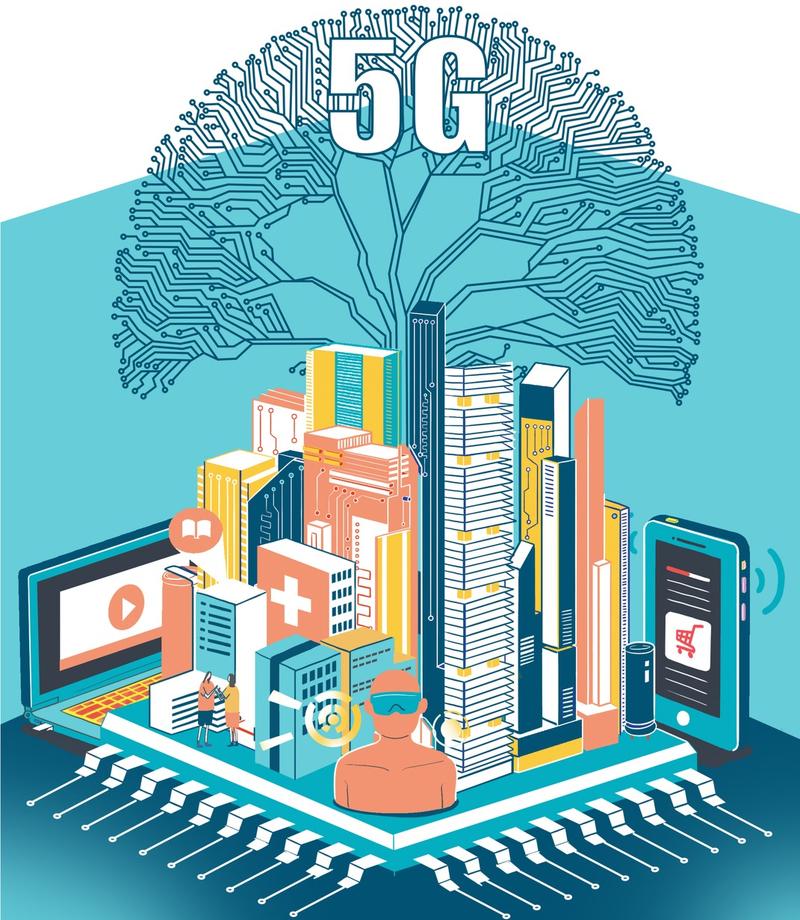 (SHI YU / CHINA DAILY)
(SHI YU / CHINA DAILY)
The central government has been promoting the construction of "new infrastructure" since the beginning of this year, and the annual sessions of the National People's Congress and Chinese People's Political Consultative Conference National Committee next week will present a more specific implementation plan for new infrastructure.
Traditional infrastructure alludes to material facilities that provide public services for social and economic activities; it is the foundation of all sectors of the economy. As for new infrastructure, although it includes some material facilities such as 5G networks and data centers, it is more often in virtual forms such as apps and tends to be digital, internet-based and "intelligent"-and totally different from traditional infrastructure such as railways, roads and airports.
Construction of new infrastructure will not only help China cope with the consequences of the novel coronavirus outbreak, expand domestic demand and stabilize economic growth and employment in the short term, but also lay a long-term foundation for boosting economic growth, improving people's livelihoods and sharpening China's competitive edge in global markets.
Thanks to reform and opening-up, China has made significant achievements in traditional infrastructure including transportation, energy, telecommunications and water conservancy, which played (and still plays) a significant role in the country’s rapid economic growth
It was the Central Economic Work Conference in December 2018 that first proposed the concept of new infrastructure, including 5G, artificial intelligence (AI), industrial internet and internet of things, and the Government Work Report in 2019 vowed to advance the construction of new generation information infrastructure. Since then the central government has been promoting the construction of new infrastructure.
On April 20, the National Development and Reform Commission for the first time defined new infrastructure as a new type of infrastructure guided by new development concepts, driven by technological innovation, based on information networks, and oriented toward high-quality development needs, providing digital transformation, intelligent upgrades, integrated innovation and other services. At present, it mainly includes three aspects-information infrastructure on new generation information technology (IT); integration infrastructure based on internet, big data and AI; and innovation infrastructure to support research and development for public benefit.
The definition and scope of new infrastructure will evolve along with scientific and technological development. According to the NDRC, new infrastructure construction mainly includes 5G base stations, extra-high voltage supply systems, high-speed railways and urban rail systems, new energy vehicle charging points, big data centers, AI and industrial internet. It also includes facilitating digital transformation of industries, and integration of innovation services for high quality development.
Compared with traditional infrastructure construction, new infrastructure construction depends more on new technology, which in turn depends on high-end industrial development. And new development ideas and advanced technologies and IT networks are needed to build information infrastructure and boost R&D for public benefit.
New infrastructure construction represents China's new development goal. Thanks to reform and opening-up, China has made significant achievements in traditional infrastructure including transportation, energy, telecommunications and water conservancy, which played (and still plays) a significant role in the country's rapid economic growth. But to achieve high quality development, China needs all-round social and economic development, not just continuous economic growth, which makes new infrastructure construction mandatory. New infrastructure construction contributes more to digital economic development, and therefore it will promote high-quality development.
Traditional infrastructure construction faces many problems, including lack of proper planning, which result in waste of resources, excessive production and high debt pressure. So authorities at all levels should take measures to avoid such problems in new infrastructure construction, strictly follow market rules, and must not view such construction only as a short-term economic stimulus tool.
The first goal of new infrastructure construction should be to improve people's livelihoods, and promote innovation. As such, the focus should be on 5G networks, data centers, AI development, and consumption upgrading. Which will not only make up for China's developmental weaknesses but also improve people's livelihoods, and thus help the country to overcome the "middle-income trap" and achieve innovation-driven development.
More important, new infrastructure construction should be in accordance with the actual situation of a given region, as there are huge development gaps among different regions of China. Only when new infrastructure is suited to actual local conditions can it facilitate local economic development. And since proper planning is critical to improve the efficiency of new infrastructure construction, the central government should work out the overall plan and local authorities should implement it according to the local conditions while avoiding vicious competition and waste of resources.
The author is a researcher at the National Academy of Development and Strategy and a professor of economics at Renmin University of China.
The views don't necessarily reflect those of China Daily.


